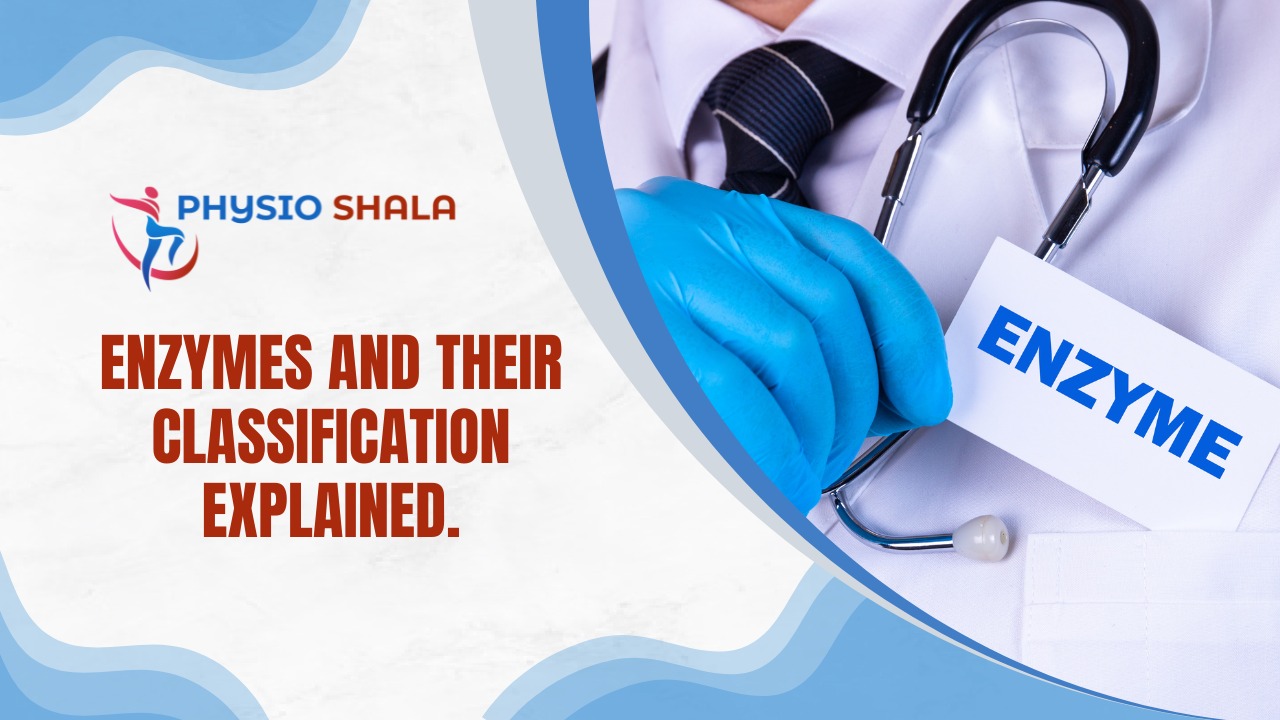Enzymes are biomolecules that have carbon, hydrogen, oxygen, and nitrogen, and they are protein in nature. They are called biocatalysts as they have the potential to increase the velocity or rate of reaction without themselves undergoing any change in the overall process. Enzymes are formed by the living cells and are protein in nature (exception – RNA acting as ribozyme), colloidal and thermolabile in character, and are specific in their action.
Enzymes are important for the functioning of the human body. Through binding to and altering the compounds, they play a vital role in the smooth functioning of various systems of the body.
Properties of Enzymes
Here are the properties or characteristics of enzymes:
- Enzymes are required in very small quantities in a reaction.
- Enzymes are structural proteins in nature and if the conditions in the reaction environment are not favourable, they will not function.
- Enzymes are always used in optimal quantity.
- Enzymes enhance the rate of reaction in the right direction and thus, they are called biocatalysts.
- Enzymes reduce the activation energy of a reaction thus promoting it, and itself has lower energy of activation.
- In an enzyme-catalyzed reaction, a substrate complex is formed which finally gives the product.
E + S à ES à EP à E + P
(E- enzyme; S- substrate; ES- enzyme-substrate complex, EP- enzyme-product complex, P- product)
- Certain enzymes are inactive and are activated only in the presence of co-enzymes.
- Enzymes are highly specific in nature.
Classification of enzymes
In earlier days enzymes were given names randomly which did not tell about their function of nature of substrate they act upon. For instance – pepsin, trypsin, chymotrypsin- these names give no information about the function of these enzymes.
Sometimes the suffix -ase was added to the substrate to name the enzyme. For example lipase acts on lipids; nuclease on nucleic acid etc. These are called trivial names which also does not give complete information about enzyme reaction.
Then, in 1961 The International Union of Biochemistry (IUB) appointed an Enzyme Commission which studied all the existing enzymes and laid down basic principles for the nomenclature and classification of enzymes. This system is followed now and the enzymes are divided into 6 major classes based on the type of reaction.
For the sake of classification, enzymes can be classified as follows:
- Based on ORIGIN
- Based on FUNCTION/ PROPERTIES
- IUB SYSTEM OF ENZYME CLASSIFICATION
Enzymes based on Origin
On the basis of origin there are two types of enzymes:
- Intracellular Enzyme– if an enzyme is synthesized in a cell of a particular tissue and functions within that cell its is called an intracellular enzyme. For example- enzymes functioning in glycolysis, TCA cycle, and fatty acid synthesis
- Extracellular enzyme– If an enzyme is produced by cells of a particular tissue and is then liberated for use in other tissues, that enzyme is called an extracellular enzyme. For example- all the enzymes of the digestive system.
Enzymes based on Functions
- Hydrolytic enzymes– these enzymes work mainly in the digestive process and hydrolyze carbohydrates, fats, and proteins called Amylases, Lipases, and Proteases respectively.
- Deaminising enzymes– these enzymes help to remove an -NH2 group from amino acids in the metabolism of proteins. Example- Trans-aminases, De-aminases.
- Coagulating/Clotting enzymes– these enzymes convert soluble protein into its insoluble form.
Example- Rennin present as an enzyme converts casein in the milk to its insoluble form that is calcium para caseinate which helps in digestion of the milk particularly in infants. - Similarly, in the clotting of blood which takes place in the presence of Vitamin K is affected by the enzyme Fibrin to give Fibrinogen which forms the mesh-like network in the clot.
- Oxidizing enzymes– the oxidizing enzymes also undergo reduction and are involved in all the redox reactions.
- Dehydrogenating enzymes– these enzymes help in the removal of hydrogen from the substrate.
- Mutating enzymes– these enzymes are responsible for bringing about a chemical rearrangement.
IUB System of Enzyme Classification
Under the IUB classification of enzymes- six major classes are defined.
- Oxidoreductases: These enzymes are involved in oxidation-reduction reactions.
- Transferases: These enzymes are responsible for catalyzing the transfer of functional groups.
- Hydrolases: These enzymes function by hydrolyzing various compounds.
- Lyases: Enzymes specialized in the addition or removal of water, ammonia, CO2, etc.
- Isomerases: Enzymes that are involved in the isomerization reactions.
- Ligases: Enzymes catalyzing the synthetic reactions (Greek: ligate—to bind) where two molecules are joined together and ATP is used.
OTHLIL– word to remember the six classes in the correct order.
Each class is subdivided into many sub-classes which are also further divided. A four-digit Enzyme Commission (E.C.) number is assigned to each enzyme which represents:
-the class- the first digit
-sub-class- the second digit
-sub-subclass- the third digit
-the individual enzyme- the fourth digit
A specific name is given to each enzyme which indicates the substrate, coenzyme (if any) and the type of reaction catalyzed by that enzyme.
Although the IUB names for the enzymes are specific and unambiguous, they are not used for general use due to their complexity which is also difficult to remember. Therefore, the trivial names are commonly used with their E.C. numbers as and when required.
References –

